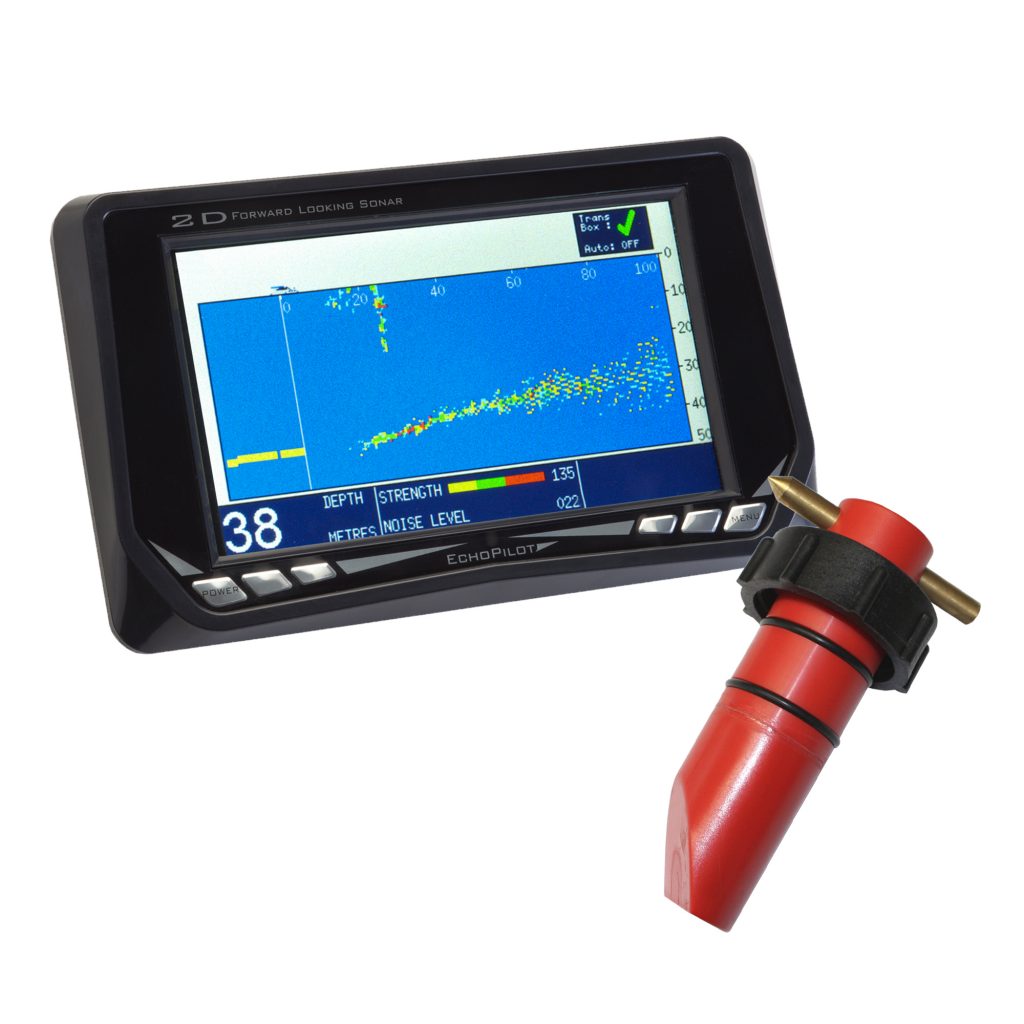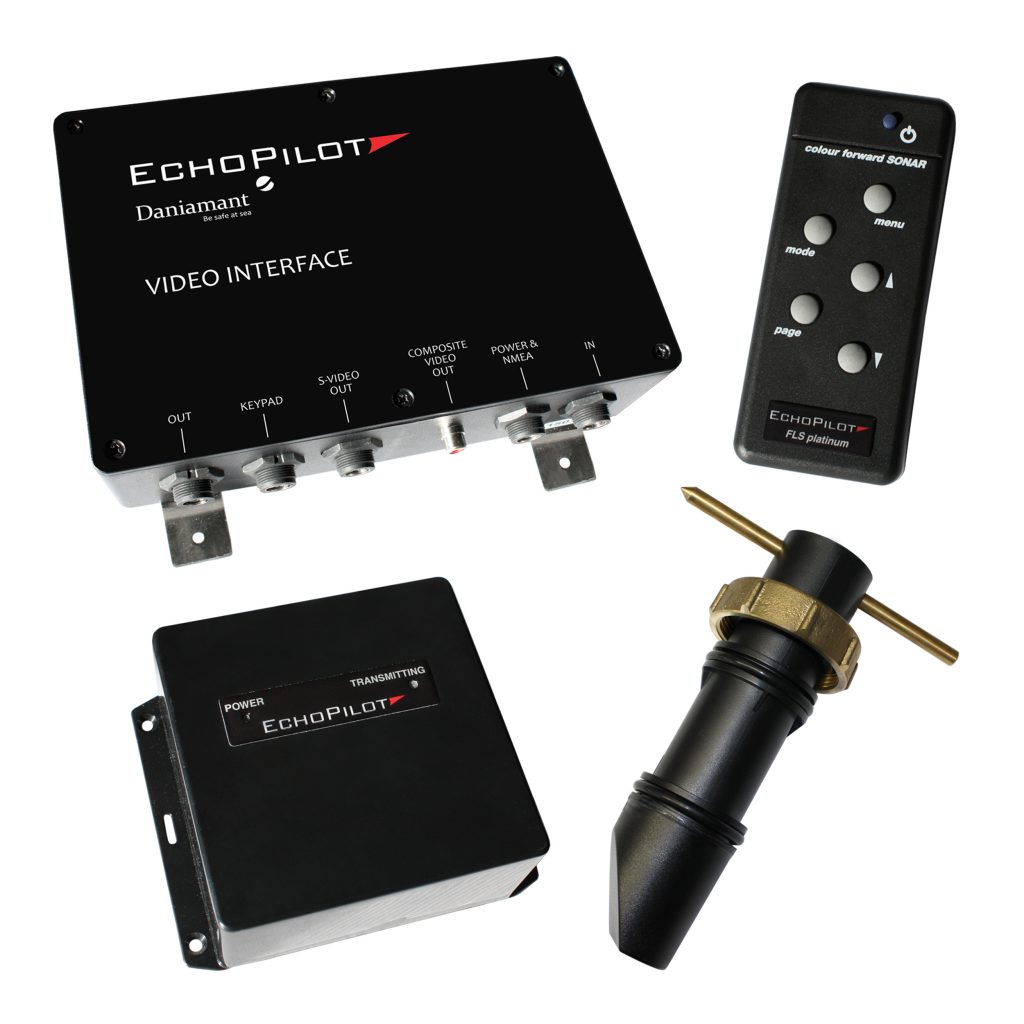
When sailing in a yacht, the ability to spot an underwater obstacle before you hit it, gives a Captain a distinctive advantage. In the past the traditional approach to avoiding hazards has been to plan ahead in order to avoid them before going anywhere near them. The greatest principle of any voyage planning is to plot a safe passage.
However, even today, some places are poorly charted and there are moving shoals which frequently defy the efforts of hydrographers and harbour buoyage.
A new Forward Looking Sonar (FLS) has been released onto the market by Daniamant a company that specialises in the development and manufacturing of safety equipment for the commercial and leisure marine industry.
It has been designed for navigation in areas of uncertainty and offers higher assurance in poorly chartered areas.
Safety at sea
Safety at sea is a core mission for Danish based Daniamant as it strives to produce and develop products that will save lives at sea.
The company motto, Safe People, Safe Systems, Safe Sailing, runs deep in the organisation and Daniamant always has its sights on maximising its contribution to the safety of the marine industry. So it has been continuously striving to develop its products to exceed marine safety standards.
When navigating unchartered waters or entering shallow harbours, it is important to be able to see dangers ahead of your vessel before it is too late. Looking ahead is imperative to ensuring safety when out on the water.
However, while a good survey and a precise position has been the key to keeping boats safe and sound for centuries, there are times when this isn’t an option.
Forward looking sonar
Forward Looking Sonars (FLS) are designed for navigation in cases such as this and offer insurance for your vessel against unseen obstacles, making difficult anchorages less stressful. Unlike simple digital sounders which may show a depth that is 10 to 15 seconds out of date, which could easily be hundreds of metres behind you when moving at speed, the Daniamant FLS updates every 0.2 seconds to give real time information.
If you are moving, this gives you a far more accurate representation of what is beneath your boat as an obstruction will appear almost immediately on the screen, allowing you to react quickly to avoid collision.

The EchoPilot FLS 2D is a single display product. The seven-inch full colour TFT LCD display enables the user to gain much more information about the nature of the seabed, whilst also being more visually pleasing.
Stronger echoes produce colours at the red end of the spectrum, indicating a hard seabed such as rock which you want to avoid, whereas weaker echoes received from softer materials such as sand or mud are shown as colours at the yellow end of the spectrum. The different fields or types of information are shown in contrasting colours, enabling the navigator to digest information much faster.
18 Years of research
The culmination of more than 18 years of research and manufacturing of forward looking sonars, the EchoPilot FLS 2D comes in three variations: the FLS 2D Standard, the FLS 2D Professional and the FLS 2D Repeater. The FLS 2D Standard comes with EchoPilot’s standard transducer. And this fits through a glass filled Polypropylene thru-hull with a one inch of useable thread.

Most hulls can take the standard transducer. However, with a thicker hull or one with a significant degree of dead rise requiring wedges or chocks to keep the transducer vertical, the FLS 2D Professional is the choice to make. The professional transducer has a bronze through hull housing with three inches of usable thread and requires a 2.37-inch diameter mounting hole. The FLS 2D repeater gives you the option for multiple FLS 2D Displays if more than one display is required.
Easy installation involves a single, retractable transducer and a short cable leading to a transmitter box. A simple data cable, may be extended from the standard 10m up to 100m. This takes the display signal to a ‘Video Box’ with a remote keypad. Owners have the option of having the output displayed at the helm only, or additional EchoPilot Video Interface Boxes can be ‘daisy chained’ to run two displays at different locations, each with their own keypad.
The keypad operates the sonar part of the display without the need to use the plotter or radar controls. Daniamant provides Composite Video and S-Video output, along with all cables needed to attach to most video displays.
